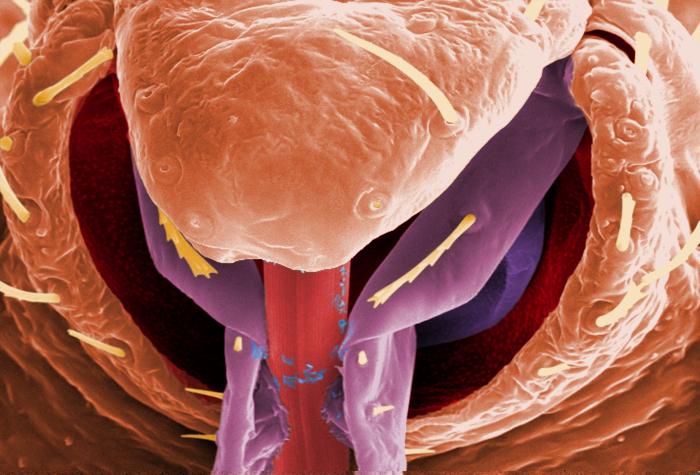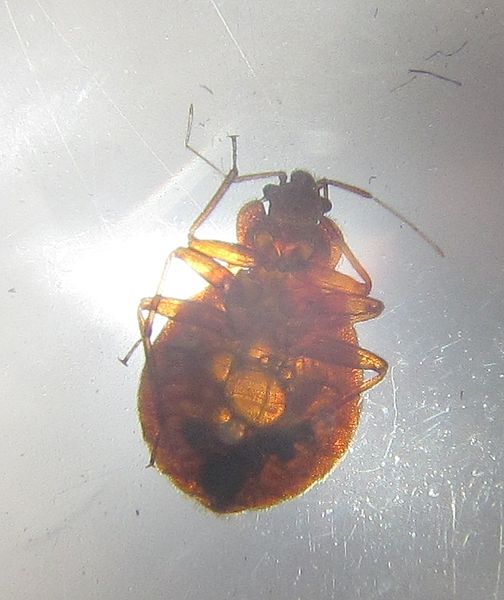
Everyone hates the buzzing mosquito. Then too, people fuss when they find a tick burrowed in their skin. What about itching? Chiggers are the King of Itch. Worse, however, than any of the aforementioned is an infestation of Cimex lectularius, the bed bug most common to North America. This blood-sucking varmint is very difficult to control and even harder to eradicate.
Pests as Vectors of Disease
Beyond being simply annoying, some blood-feeding insects can pose serious human health risks. So how do these four pests compare when it comes to transmitting disease-causing organisms? Both mosquitoes and ticks are legendary vectors for disease.
Mosquitoes, for example, spread some serious, even life-threatening diseases, such as malaria, yellow fever, dengue, West Nile virus, Zika virus, and various forms of encephalitis.
Commonly-known tick-borne diseases are: Rocky Mountain Spotted Fever, Lyme disease, Tularemia, Colorado tick fever, and Tick-borne relapsing fever (TBRF). To this list can be added a host of other illnesses with names difficult to pronounce.
In contrast, chiggers (mites of the family Trombiculidae), another group of blood-feeding arachnids, seem largely innocuous. The primary problem with a “chigger bite” is severe scratching of the itch, which can lead to secondary infection. Still, chiggers in some rural parts of the Old World tropics, mainly Asia and northern Australia, vector the potentially-fatal scrub typhus.
What of our “friend” the bed bug? While there are a few obscure reports of health threats, these are poorly documented. The medical community consensus is, while bed bugs may carry, they do not transmit disease (see the CDC FAQ in references for more information). Why not? There is no absolute consensus as to why not. The following discussion will discuss some of the arguments on this topic. These should not be accepted as fact until sufficient evidence is obtained.
Why Not the Bed Bug?
One acquaintance of mine, a mathematician (whose thinking, I suggest, reflects intelligent reasoning), suggested the following possibilities might account for it based on mathematical probability:
- If the bed bug does not inject, but only sucks from a surface wound
- Assuming it stays with one family, disease transmission among groups of people could not take place/span>
- If it does not feed on other species, the bedbug would not be a pool for cross-species diseases
Let’s consider these possibilities in order.
Injection
The first bullet point represents a combination inquiry and statement. “If the bed bug does not inject…” In fact, the bed bug does inject its mouth parts into the person it is feeding upon. So the suggestion in the first bullet point falls by the wayside. Well, what does the bed bug inject? The following quote comes from the National Institutes of Health Bedbug Review:
“Bed bug mouthparts are adapted for piercing the skin and sucking blood and have extremely fine needlelike stylets that are inserted into the skin and are withdrawn after feeding. During feeding, the bug injects saliva that contains various protein fractions, some of which have anticoagulant properties. In C. lectularius, this includes nitrophorin, which is a vasodilator inducer; apyrase, which inhibits platelet activation and aggregation; and an inhibitor of factor X, which delays blood clot formation.
A recent investigation on the sialome (saliva) of C. lectularius revealed 46 different protein components: many play a role in overcoming host hemostasis, some function in host protection (including possibly as antimicrobial agents), and others have a role that is as yet unrecognized. It has been stated that bed bugs inject an anesthetic, although none has yet been identified.”
Put more simply, the bedbugs inject a host of proteins and components into the person they’re feeding upon, so clearly the idea that they don’t inject can’t be the answer as to why they wouldn’t transmit disease.
Spreading Through Travel
As to the second bullet point, although the bed bug tends to travel not more than about eight feet from its food source (often a mattress and box spring) it is carried to new locations when people move infested furniture or clothing. So, although they don’t travel as fast or as frequently as a mosquito, bed bugs do travel. So any transmission would logically be slowed, but not prevented entirely.
Feeding Habits
The third statement is probably the best of the three bullet points. Bed bugs much prefer human blood over other blood. Shockingly, a bed bug can go for as much as a year without eating a blood meal! If there is no human source, the bed bug will consume other blood, from animals. But if there is no human source, there is likewise no human to receive disease.

Ongoing Research
Recently, it has been suggested bed bugs might be able pass on disease, given the proper conditions. How is that? The journal Archives of Dermatological Research reveals that:
“ studies…showed that pathogens, such as B. quintana and T. cruzi, may survive in bed bugs under laboratory conditions…”
Surviving in bed bugs under laboratory conditions, however, is not the same as passing along disease.
Bedbugs, Other Parasites, and Disease Transmission
Bartonella quintana is a bacterium, is most commonly vectored to humans by lice, and is the causative agent of Trench fever. Trypanosoma cruzi is a protist, is most commonly vectored to humans by Triatominae “kissing bugs”, and is the causative agent of Chagas’ disease. Concern regarding the ability of other human pathogens to reside inside bed bugs with potential to transmit to humans have led researchers to investigate their potential to vector many other disease pathogens, including HIV.
If such diseases were ever to start being transmitted by bed bugs, it would prove devastating as bed bug populations are on the rise. However, at the moment, the current consensus by the medical and entomological scientific communities is that bed bugs remain listed as non-vectors of any human pathogens.
Note: You might also enjoy Eastern Tent Caterpillar Dissertation
← Back to Food and Health
← Home

Bed bugs have been found on metro (underground) trains, so they can certainly spread further than 8 feet, even if the bed is not moved. But it’s slightly comforting to know that you (probably) won’t catch a disease if bitten!
Surely a bedbug walking over the skin of a Covid-19 victim who is at the disease stage of rapidly shedding viruses from their skin would get the viruses onto their feet and under-body. What is to stop this transmission from occurring?
So a bug laden with highly contagious viruses crawling over another healthy person shouldn’t pass the viruses onto a new victim?
To say that a bedbug cannot be a vector for disease is I think ridiculous.
Prove it. Provide evidence that such can occur. If you can, I’ll write another article…